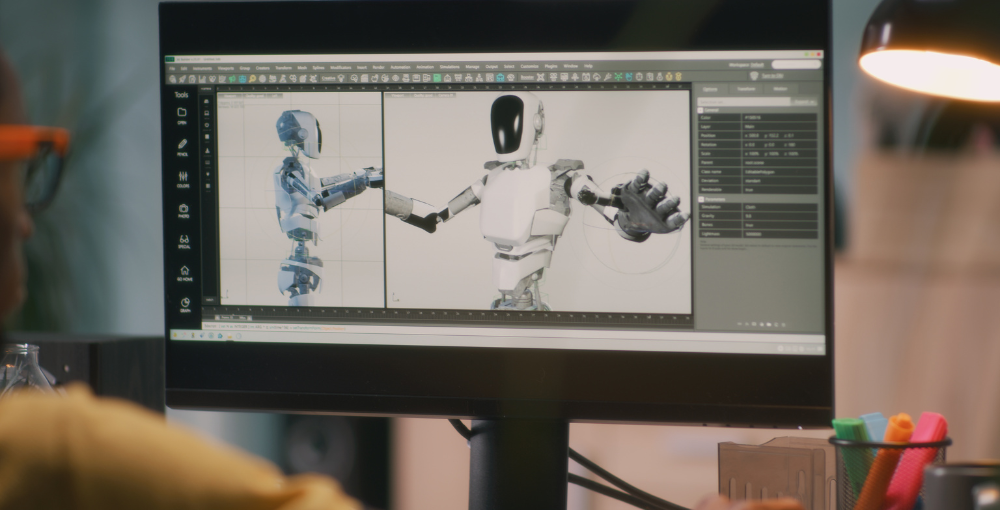Guest Blog: The Real-world Marketing Uses of Video Game Engines

This blog has been written by Dr Mathew Randall, a lecturer in computer graphics and visual effects at Birmingham City University, and an Unreal Animation Fellow.
GAME ENGINES ARE NOT JUST FOR GAMES
Game engines have been around for many years, proving themselves to be valuable tools for creating and publishing games and applications on multiple platforms and devices.
However, game engines are fast becoming more of a general-purpose tool for working with 3D models and digital assets, allowing them to be utilised for purposes outside of the games industry. Mostly used in client engagement and marketing, video game engines allow for product and architectural visualisation, online collaborative environments, virtual tours, and animation.
As a result, the two leading game engines (Unity and Unreal Engine) have both been working hard to develop their games engines to better support non-gaming usage. They have also adjusted their pricing and revenue models to generate revenue from people using their software for visualisation and content creation purposes.
So, this seems a good time to reflect on recent developments in game engines, consider their potential business applications, and assess the value proposition of their new revenue models.
GAME ENGINES PROVIDE GREATER VISUALISATION TOOLS
With the demand for non-video game uses rising, both Unity and Unreal Engine have prioritised the enhancement of their rendering capabilities. There has been a particular focus on improving their ability to render reflections and simulate light bouncing of surfaces.
THE PLATFORMS ARE CONSTANTLY EVOLVING
Until recently, photorealistic renders were done by offline renders which use path tracing techniques to trace the movement of light around a scene, taking many minutes to render a single image.
Continued advances in the power and architecture of graphics processors have allowed game engines to move from producing flat renders (that look like computer games) to more photorealistic renders with bounced light and reflections. An example of this innovation is Lumens implemented in Unreal Engine 5.0, which allows realistic reflections, shadows, and bounced light to be rendered in real-time.
Previously, if you wanted to provide compelling photorealistic visualisations of products, facilities, or architectural plans to clients, you would be limited to showing pre-rendered images or videos. Now, you can allow your clients to interact with realistic visualisations in real-time, offering them a more engaging way to explore a potential space or product.
SUPPORT THE PRODUCTION OF INTERACTIVE ELEMENTS
Game engines support a wide variety of 3D assets, allowing fast workflows for moving a product or building design from computer-aided design to game engines. Additionally, Unreal Engine gives users a library of photorealistic textures and scanned 3D models, called Megascans, which can also be used in your visualisations.
Real-time visualisation allows you to leverage technologies like augmented reality to show a proposed product in an existing space, or virtual reality to allow a client to experience and/or explore a simulation of a facility, building, or piece of equipment.
If you are new to these technologies, they may seem intimidating, but both Unity and Unreal Engine have marketplaces in which software developers are offering prebuilt visualisation solutions that can be used to allow your clients to interact with your products.
GAME ENGINE ASSETS ARE FLUID AND MALLEABLE
Games engines don’t just allow 3D assets to be presented and visualised. In a game engine, every 3D asset can be changed and manipulated in real-time, all while maintaining a high-quality realistic render.
DYNAMIC LIGHTING CAN SUPPORT YOUR IDEAS
A powerful example of this can be seen when moving a light in a game engine. As the light is adjusted, the engine will adapt the given scene or virtual space to simulate reality, including the movement of shadows, brightness, and reflections. This could be particularly useful for interior designers to visualise lighting in a room, or lighting designers to visualise the lighting of a live event or film production.
EDITING AND PLAYING ANIMATIONS MORE EFFICIENTLY
Additionally, animation is becoming a much larger aspect of game engines than ever before, and developments in animation technologies are still being made now. Unreal Engine allows keyframe animation of characters and objects using complete control rigs and allows animations to be interactive through its Blueprint architecture and physics simulations.
Being able to animate within a high-quality real-time renderer is a unique and incredibly compelling method of marketing. Editing animations in a game engine allows the user to have far more creative freedom in a much-reduced timeframe, dynamically testing lighting and texturing while still animating. This is why some major animation studios now work almost entirely on Unreal.
This, twinned with the malleability of 3D assets in a game engine, facilitates more detailed methods of idea exploration in meetings and collaborations.
VIRTUAL REALITY IS ALLOWS CUSTOMERS TO GET HANDS ON
Furthermore, all sorts of possibilities open when you connect a game engine to a virtual reality (VR) headset and its controllers. This allows virtual objects in a simulated environment to be manipulated by using the VR controller, turning a virtual object into something tangible that can be moved by an individual.
This means you can make a handheld camera, animate a character’s hand, or allow a client to view a product from all sides, simply by binding the virtual environment to a VR headset. It doesn’t end there, Unreal Engine has a sequencer, allowing the movement and orientation of virtual objects to be recorded as they are being manipulated and later edited in same way you would edit video in video editor.
Tracking is not limited to VR headsets and controllers. Even an iPhone can be used to move a virtual camera to explore an environment, capture a face to create a talking head animation, or motion capture complete body movement with the help of other applications and new developments.
IS IT WORTH PAYING FOR A GAME ENGINE?
As of April 2024, the price for both Unreal and Unity is about £1,500 per seat, per year for a small business. The good news is that you will be able to continue to use Unreal Engine 5.3 for free if you are not publishing games or applications, with the new pricing model only being applied to Unreal Engine 5.4 and onwards.
Whether this is value for money will depend on your business. Will using a game engine allow you to attract bigger projects or less price sensitive clients? Can a game engine replace some other digital content creation tool that you currently use? Both Unreal Engine and Unity are trying give businesses a compelling offer, often including other pieces of specialist software with their licences.
Both game engines will continue to be free for hobbyists, so there is no reason not to download experiment with these tools and get better understanding of the value they could potentially offer. They are big and complex but don’t be intimidated; there are plenty of introductory tutorials available on the web and plenty of tools available in their respective marketplaces to boost your productivity and give you the solution you are looking for.
FIND OUT MORE ABOUT BIRMINGHAM CITY UNIVERSITY
Dr. Mathew Randall is part of an industry-leading School of Computing and Digital Technology at Birmingham City University, recognised internationally for their high quality teaching, research, and long list of professional partnerships.
The BCU School of Computing and Digital Technology offers both undergraduate and postgraduate degree programmes for study at the university’s city centre campus. Check their website for the full list of available courses and details on how to apply!
Alternatively, if you’re looking to produce product demonstrations or marketing presentations for your next big convention, the EDGE Creative team are here to help. Get in touch with our team of marketing experts on 0121 355 8092 today or email info@edge-creative.com and an expert marketer will respond as soon as possible.

